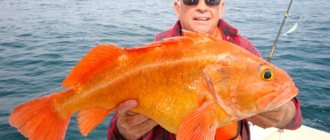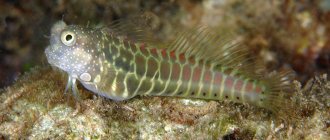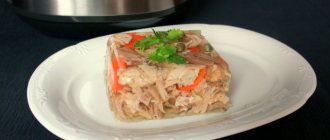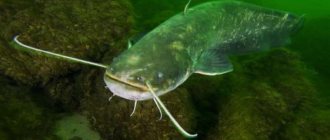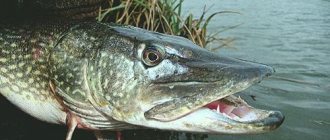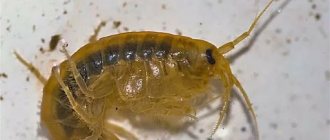Description of the fish
The sea chicken is large, it reaches 35-40 cm in length with a weight of up to 1.5 kg and a height of up to 15 cm. The fin on the back is long, starting at the gill slits and reaching the tail. The head is medium in size, occupying approximately 1/8 of the total length. The mouth is large, straight, the eyes are golden amber in color.
@PublicDomainPictures pixabay.com
The body of tilapia is covered with large, tightly fitting scales. The color is uniform. The main feature of fish is its adaptability; it is able to survive in any conditions. In fact, it is a river fish, but can survive in salt water. Temperature is not at all the main indicator; tilapia tolerates temperatures dropping to 10 °C and rising to 38-40 °C.
Attention! The cock of the guinea is not related to the hen of the guinea. It belongs to the family of marine ray-finned fish from the order Scorpiformes.
Breeders often pay attention to tilapia. This is due to the fact that she is an omnivore. Given a choice, he will prefer food of animal origin, but in the limited assortment he will also feast on plant foods. The ability to adapt to any living conditions has given the sea chicken its maximum distribution.
Conclusion
So, fish has a high protein content, is rich in vitamins and minerals, and has excellent taste and dietary properties.
Harm to humans from tilapia may be due to unfavorable growing conditions in reservoirs and inadequate feeding. Therefore, before purchasing, you need to find out where the tilapia farm or fishery is located, and buy fish only from trusted producers. A careful inspection of the fish product for the presence of unnatural color and odor will help prevent a poor-quality purchase.
Habitat
Tilapia is found in different regions of the planet. Its greatest numbers are observed on the American continent and in European countries. There were cases when she was hooked in Russia. Interestingly, it was brought here by aquarists back in 1918. Previously, it was only in East African waters.
Due to the lack of special requirements for living conditions, the fish began to be bred artificially. Special farms first appeared in China, the USA and Latin America. Since the 60s of the 20th century, sea chicken has been bred in Russia. The main goal of increasing its numbers is the destruction of aquatic vegetation without harm to the ecosystem.
Attention! The survival rate of tilapia fry reaches 90%. If we compare these data with information about crucian carp, the difference is colossal; no more than 10% of its offspring survive.
@sarangib pixabay.com
Chemical composition and calorie content
With a high protein content, tilapia has a low calorie content - only 96.4 kcal per 100 g of fillet, so it is ideal for losing weight or building muscle without excess fat.
Calorie table for different cooking methods
| Processing method | kcal |
| Boiled | 89 |
| For a couple | 92 |
| Baked | 91 |
| Raw | 96 |
| Fried | 126 |
Chemical composition of tilapia:
- vitamin E is an excellent natural antioxidant;
- vitamin K – improves hematopoietic processes, helps the production of red blood cells;
- B vitamins – beneficial effects on all organs and vital systems;
- Phosphoric acid salts - participate in the formation of the bone skeleton, teeth, hair and nails;
- Saturated fatty acids actively support the immune system.
Fish contains many useful microelements, such as selenium, magnesium, niacin, iron, copper, manganese, folic acid. A person’s daily requirement of nutrients can be replenished by consuming a serving of tilapia 100-200 mg.
Besides the fact that tilapia tastes good, it is also a source of healthy vitamins and minerals.
It contains in large quantities:
- wide range of B vitamins,
- vitamins E and PP,
- phosphorus,
- magnesium,
- potassium,
- selenium.
It also contains lower concentrations of calcium, zinc, iron, and folic acid.
Fish fillet is rich in protein and contains virtually no carbohydrates or fats. This makes the product low-calorie: 100 g. contains only 96 kcal.
In addition, fish contains Omega-3 and Omega-6 fatty acids, which are necessary to maintain human immunity. The benefits of tilapia (or telapia) and its nutritional value are presented in the photo.
Nutrition
The diet is highly dependent on the habitat. Chicken of the sea can eat shellfish, fry and even algae. In Asian countries, this fish prefers plant food, plankton.
She is not at all demanding when it comes to nutrition. If items from her usual diet suddenly disappear from the reservoir, she will easily find a replacement. Can eat crustaceans and industrial waste. This information worries many buyers. Can fish that eat waste be good for humans? Yes. But the main thing is to be able to choose it correctly.
Harm of tilapia to the body and main contraindications
We are all accustomed to considering fish as healthy food. But when it comes to tilapia, it should be taken into account that this product not only has beneficial properties, the consumption of this species is dangerous for people who have an individual intolerance to the components of the product, contraindications also apply to people with the following diagnoses:
- obesity;
- heart pathology;
- asthma;
- diabetes;
- arthritis;
- diseases of the vascular system.
As a rule, the harm to telapia largely depends on the habitat of the fish. Since it is an omnivore, some producers use manure as feed. Tilapia easily digests such food, but the danger is different: eggs and larvae of worms that are dangerous to human health can get into the carcass from the manure. The food may also contain hormones, antibiotics and other substances that make the fish unsafe for human consumption.
Not long ago, Polish experts tested tilapia imported from different regions for the presence of toxic metals, pesticides and other hazardous substances. It turned out that the product imported from China and Vietnam contained lead, and mercury and cadmium were found in some samples. However, experts hastened to reassure: these indicators are not dangerous to human life.
Previously, researchers from the United States, having studied the chemical composition of tilapia meat, discovered that fish fillets do not contain the most favorable combination of omega-3 and omega-6 fatty acids for humans. There are too few of the former in the product, and too much of the latter.
This combination is potentially dangerous for people with cardiovascular diseases, can contribute to joint inflammation, and become a factor causing asthma, allergic and other immunological diseases.
See also:
Salmon fish milk - benefits and harms, how and how much you can consume


